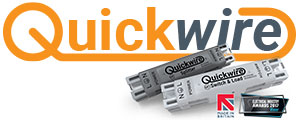I think you are a bit confused when talking about resistances.
Put simply :
The neutral wiring (which should always be treated as "live") carries the load current. If it gets broken, then something doesn't work but nothing exposed is pulled high by the load current.
The earth wiring is there to keep exposed conductive parts at a safe voltage relative to ground.
There are electrical systems where there is no connection between "neutral" and earth known as IT. They are pretty well unheard of in domestic environments as a single fault will "do nothing" - everything still works, but internally it could be that "live" is now earthed and "neutral" is "hot"), and nothing will trip until there's a second fault. it's also difficult to get a reliable floating supply other than from a standalone generator or isolating transformer. In my day job I deal with IT power systems (it's fully floating with no intended connection to earth), and we have a) monitoring equipment to detect faults, and b) full time monitoring/control of the installation by qualified people.
But back to regular domestic supplies. As PC1966 says, over here our DNO usually provides the earth - though that does have some issues. Over in the US it seems it's normal for the householder to provide an earth rod and to earth the neutral - which would seem to make it a customer provided multiple earth system (effectively you and your neighbours are sharing your earth rods).
The basic principle is that if you have a fault in your installation or an appliance, then current will flow from line (hot) to ground via the earth (ground) wires, and that current will be sufficient to blow a fuse or trip a breaker. At the same time, during the time between the fault occurring and the fuse/breaker disconnecting the supply, the touch voltage (i.e. what someone would feel if stood on ground and touching some "earthed" metalwork) needs to stay low enough that it isn't dangerous (under our rules, that's 50V for AC circuits).
It would actually work for the electricity supplier to earth the neutral at the substation (transformer), for you to provide just your local earth, and not to link neutral and earth anywhere else. But that makes the above fault handling (automatic disconnection of the supply to faults by a fuse/circuit breaker) heavily reliant on the quality of those two earths - and the ground in between.
My assumption is that those who write your wiring codes decided that having every property provide an earth rod AND earth the neutral to it would significantly reduce the fault impedances - and avoid problems where a poor earth rod means that a fault persists, the fuse doesn't blow, and in the mean time there are dangerous voltages present on "earthed" bits of metalwork. Over here that's done by the DNO (the people who pipe the lecky to our houses) putting lots of earth electrodes in the local network - called protective multiple earthing - and so providing a low impedance earth to most premises.


![[ElectriciansForums.net] Connecting ground to neutral in main panel](https://electricians.s3.eu-west-1.amazonaws.com/data/attachments/61/61600-03c6f579806586a55c9bf9d17bbedbf5.jpg)







